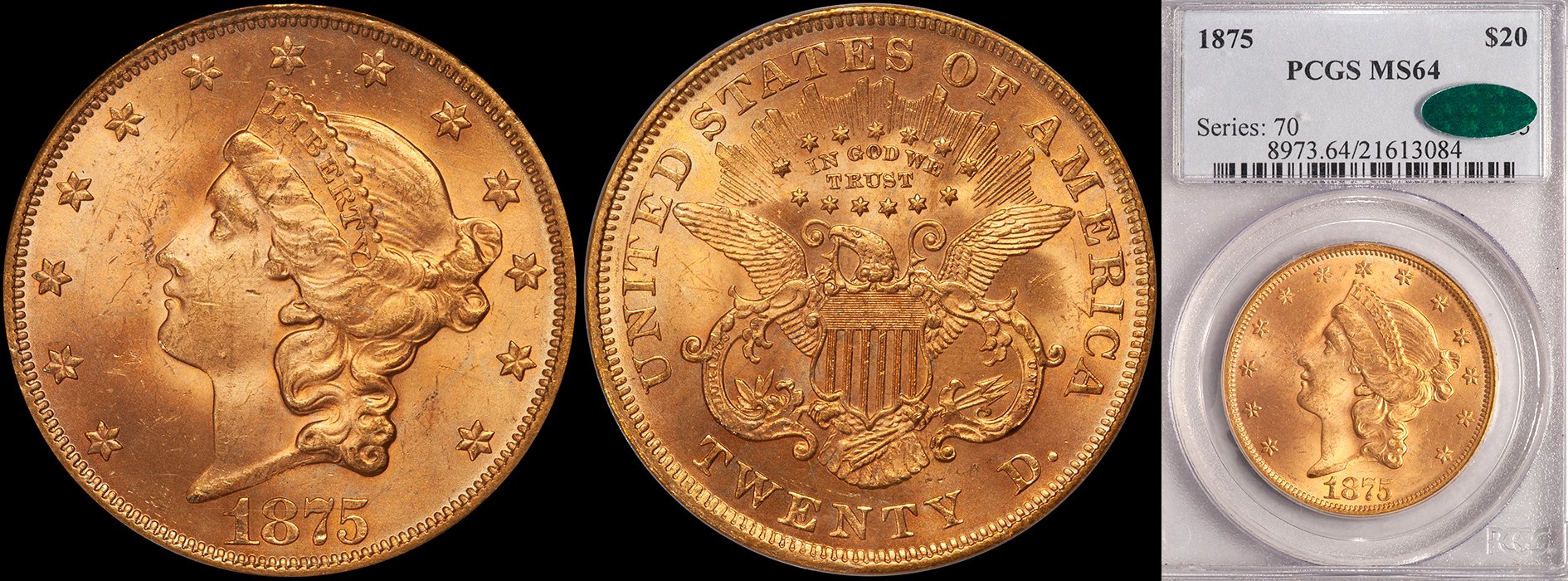Liberty Head Half Eagle Series
/Think you know the Liberty Head half eagle series pretty well? OK, then here is a test. Everyone (well, almost everyone...) knows that the extremely rare 1854-S is the rarest single issue in this long-lived series. But what is the rarest collectible date ? The answer and some interesting analysis can be found below. So have you given some thought to this question? If you answered the 1864-S, pat yourself on the back and give yourself a Gold Star because you know your Liberty half eagles! (For those of you who are about to complain and say, “Hey, Doug, how about the 1875?” my answer is that while this date is the rarest as a business strike, there are also Proofs known and the total number of 1875 half eagles is probably narrowly more than the 1864-S).
With a mintage of just 3,888 you have to figure that this is a rare coin. But there are other dates in the series with lower mintage figures, including the 1865, 1869, 1872, 1875, 1876 and 1877. As a rule Philadelphia coins were saved with greater frequency than those from the branch mints and almost no one saved any 1864-S half eagles. My best estimate is that no more than twelve to fifteen pieces are known.
As of January 2008, PCGS had graded just thirteen 1864-S half eagles including three in Extremely Fine, three in About Uncirculated and one in Uncirculated (more about this coin later) while NGC had graded ten with four in EF and three in AU.
In the last decade or so, I have personally seen a very small number of 1864-S half eagles in any grade. The last one I can recall selling at auction was a PCGS EF45 that Superior sold in May 2006 for $22,425 while an NGC EF45 brought $31,050 in David Lawrence’s July 2004 auction. Back in 2000, the Bass III coin, graded AU53 by PCGS, sold for an incredibly reasonable $23,000 and, at the time, that was one of the two best examples I had ever seen. I have also seen an NGC AU58 in the inventory of an East Coast dealer.
There is one 1864-S half eagle known that is so much better than any other survivor that it deserves special mention. I first saw this coin in October 1987 when it sold in the Norweb collection auction. The Norwebs had, in turn, purchased it in 1956 out of Abe Kosoff’s Melish sale.
This coin is in a PCGS MS65 holder but this doesn’t begin to tell the whole story about how incredible it is. The coin is essentially perfect and could easily grade MS66 or even MS67. Its only “fault” is the fact that isn’t all that well struck with some weakness visible on a few of the stars on the obverse and on portions of the upper obverse and corresponding reverse. It is by a large margin the nicest San Francisco half eagle from this era that I have ever seen and when I saw it again at the Bass sale back in 1999 I wrote the following in my catalog “world’s coolest San Francisco gold coin.”
As I was figuring my bids for this sale, the 1864-S kept popping into my mind. I badly wanted to buy this coin for myself or, at the very least, persuade one of my clients to put it away for a few years so I would have access to it when the market for coins like this would be stronger.
The coin opened for $60,000 and I bid up to $120,000 but I got cold feet and dropped out. It wound up selling for $160,000 to a Southern collector who, to the best of my knowledge, to this only owns one San Francisco gold coin—this 1864-S half eagle. And that is a hell of a San Francisco gold coin collection.
What would this 1864-S half eagle sell for today? I thought it would bring as much as $250,000 back in 1999 and had it been in a sale other than Bass II (which had FAR too many great coins for its own good...) it might have. Today, I figure it would bring at least twice this and maybe more.
Despite the obvious rarity of this coin, I think the 1864-S half eagle is still extremely undervalued. The current Trends value for an EF40 is just $14,250 in EF40 and $45,000 in AU50 with no prices listed for higher grades.
The 1864-S half eagle remains one of my favorite 19th century United States gold coins and I am confident that its true rarity will be fully appreciated in the near future.









